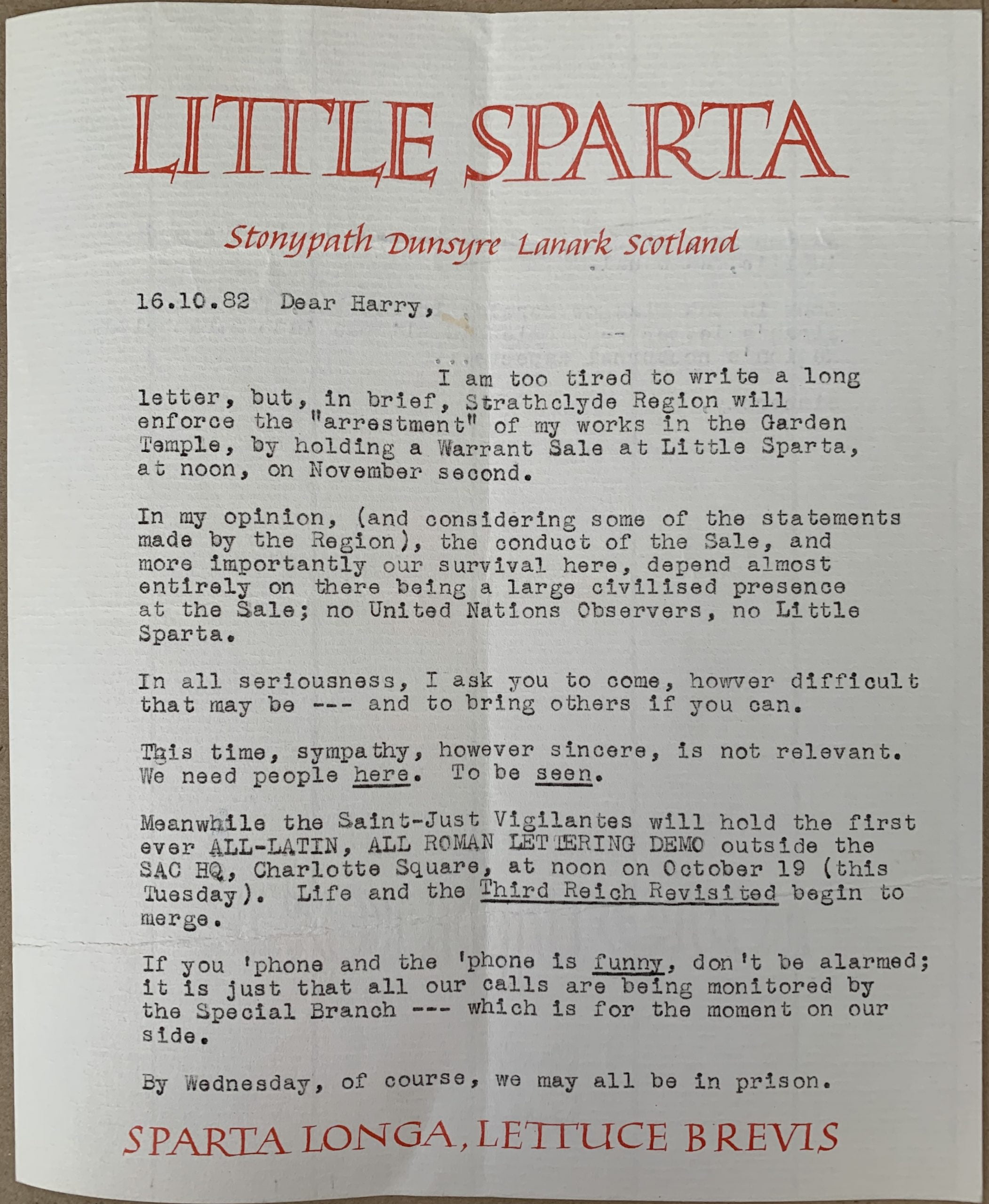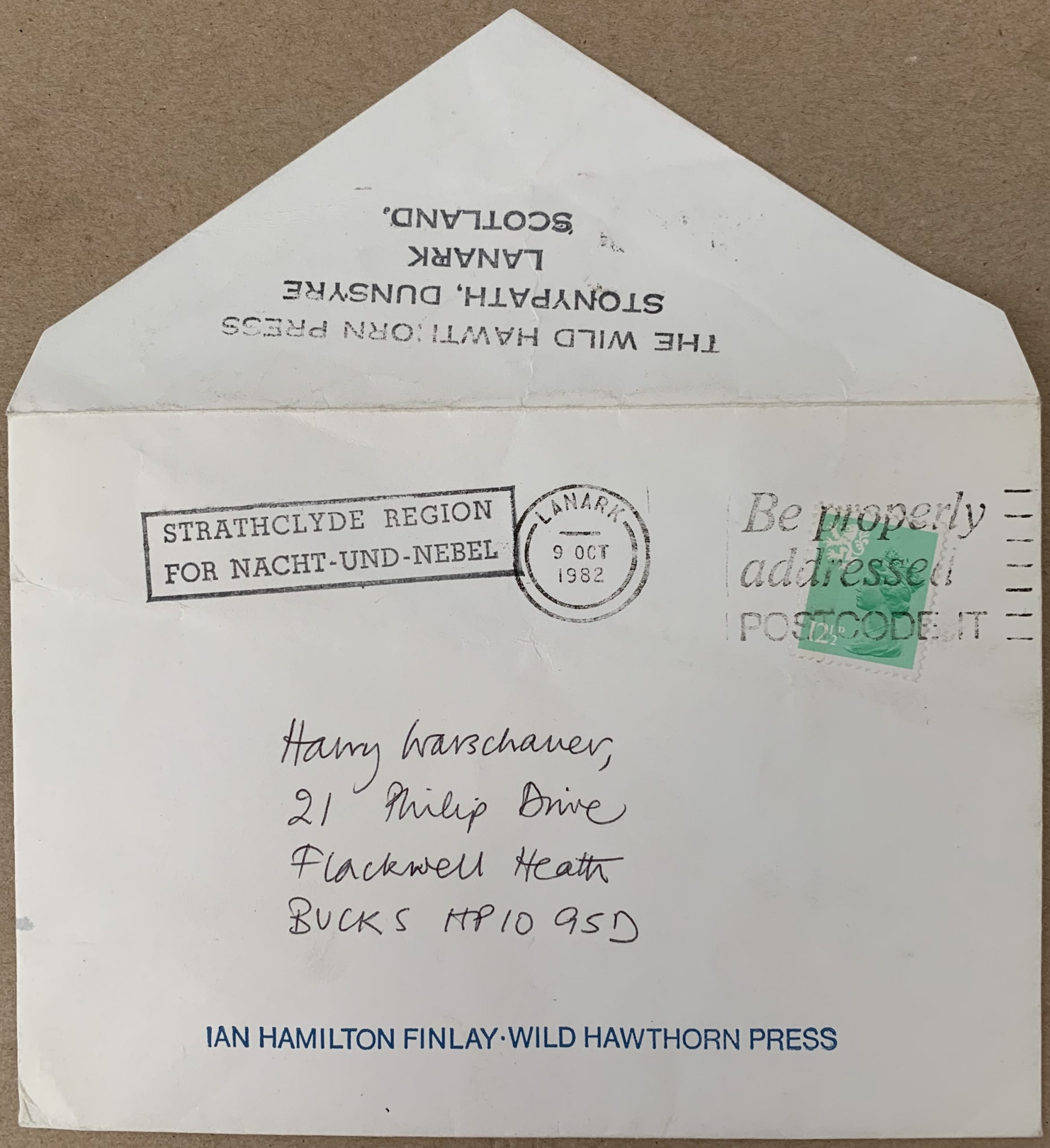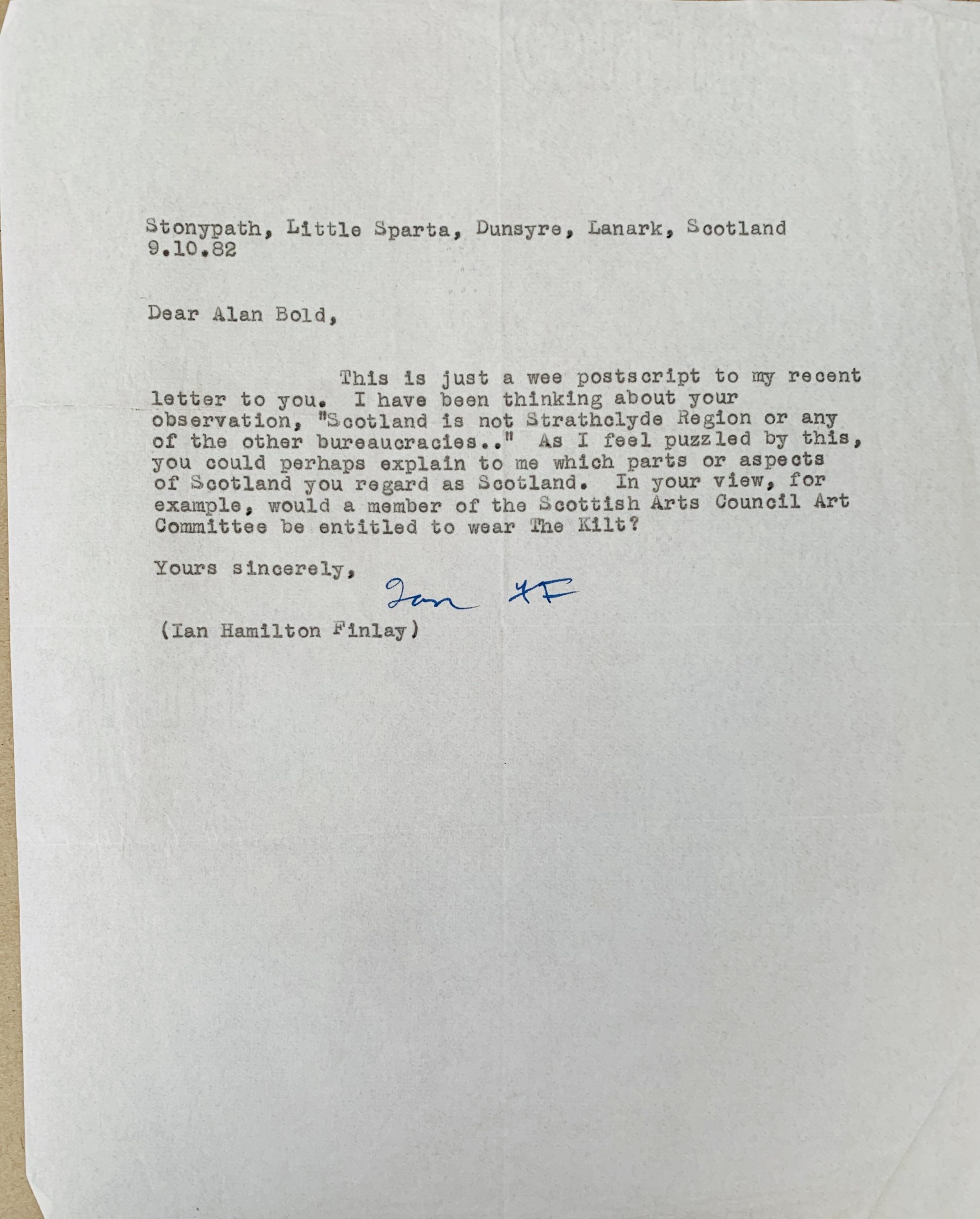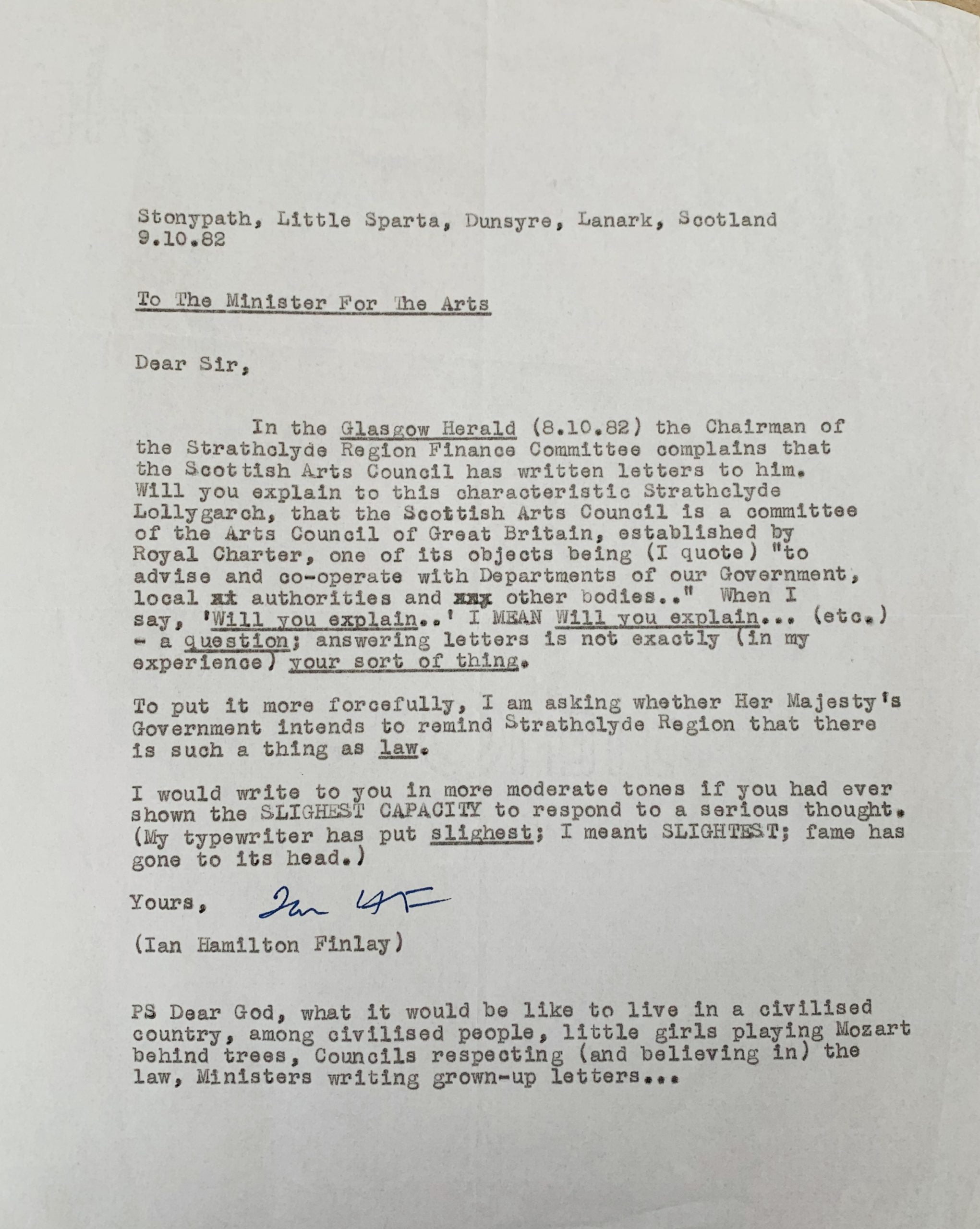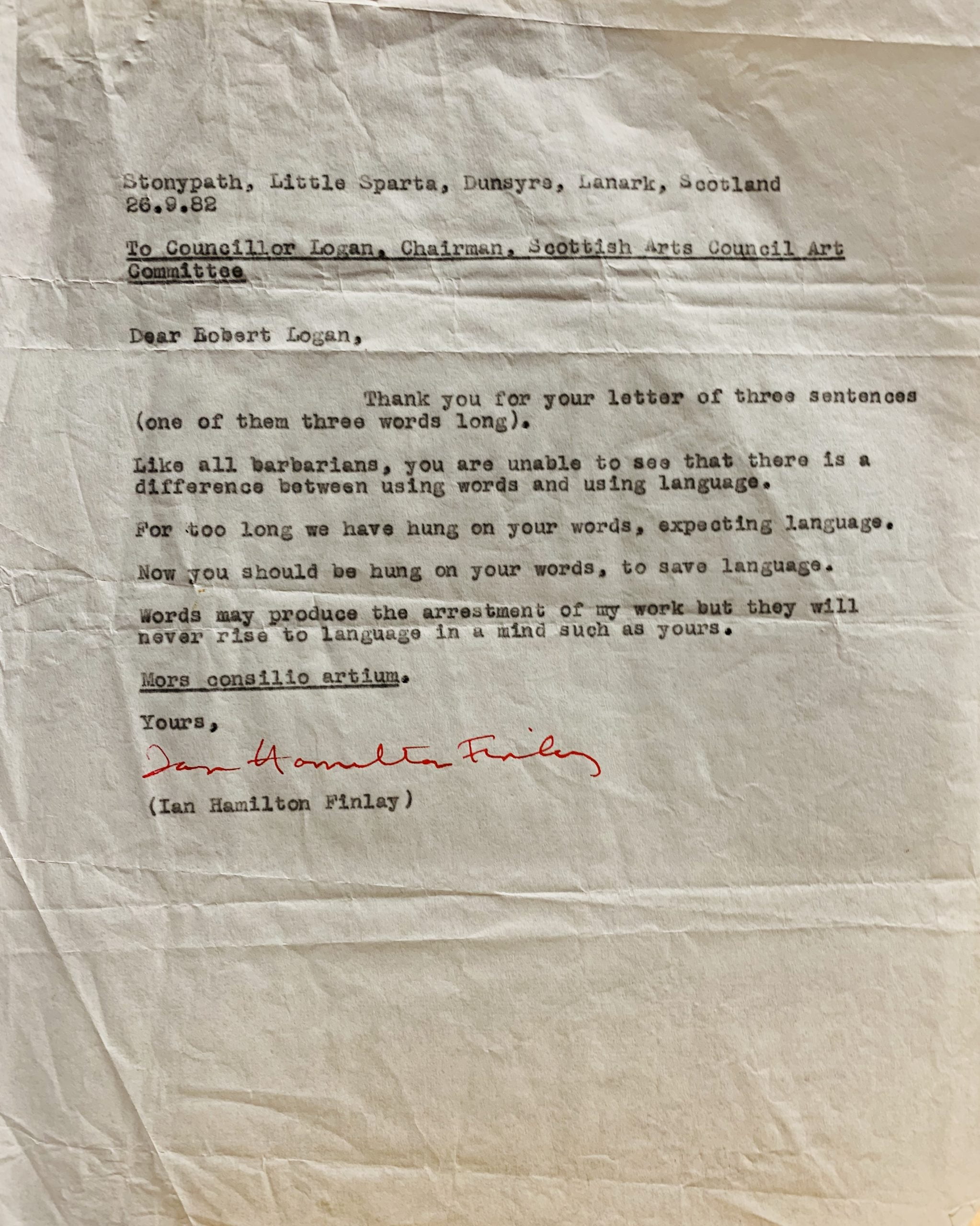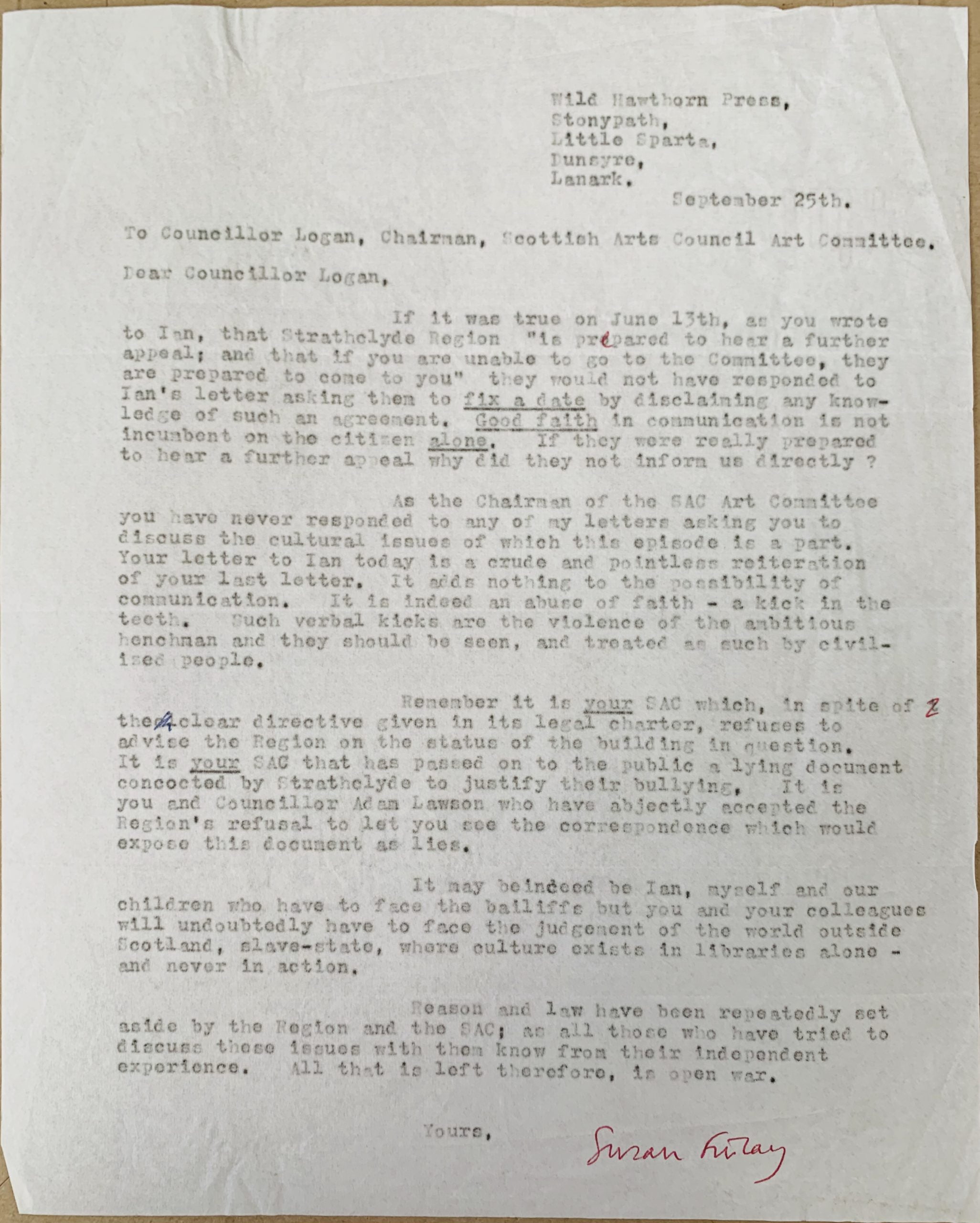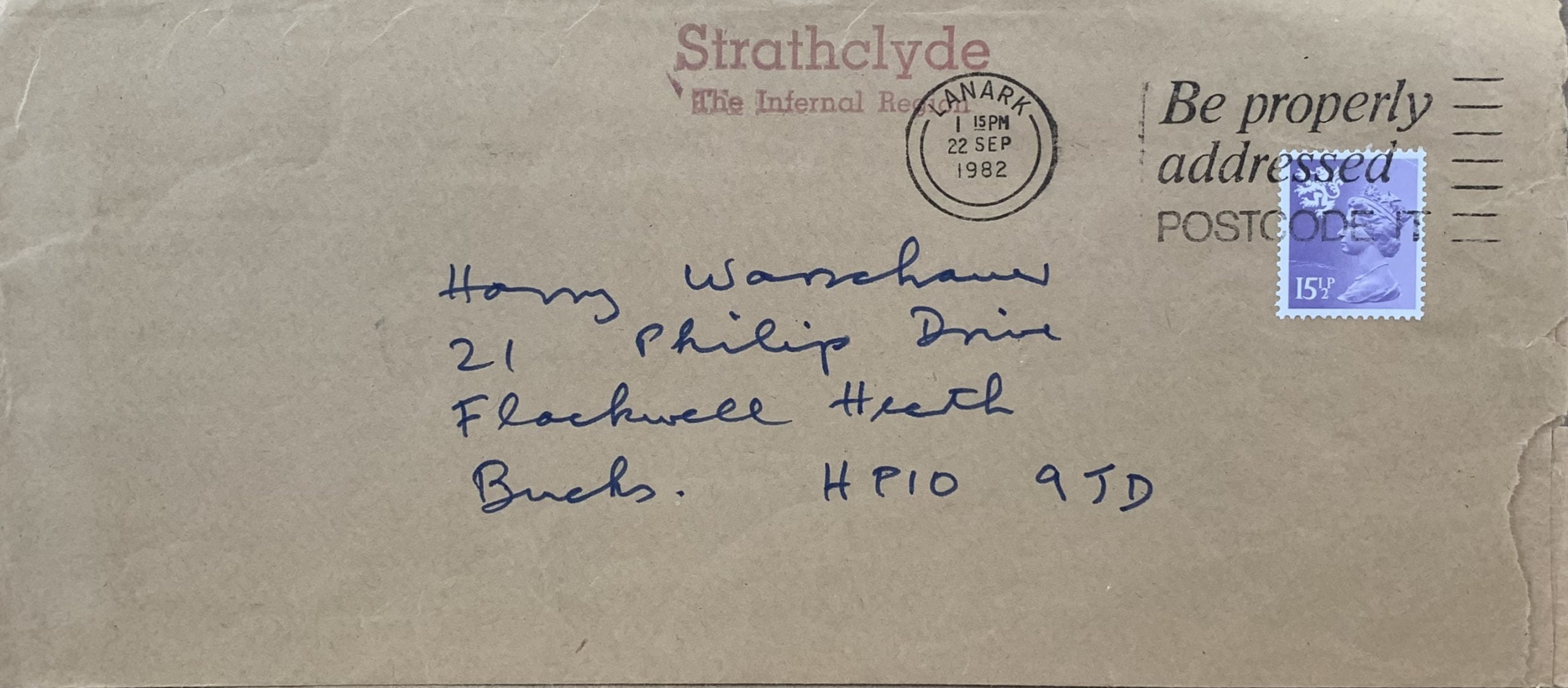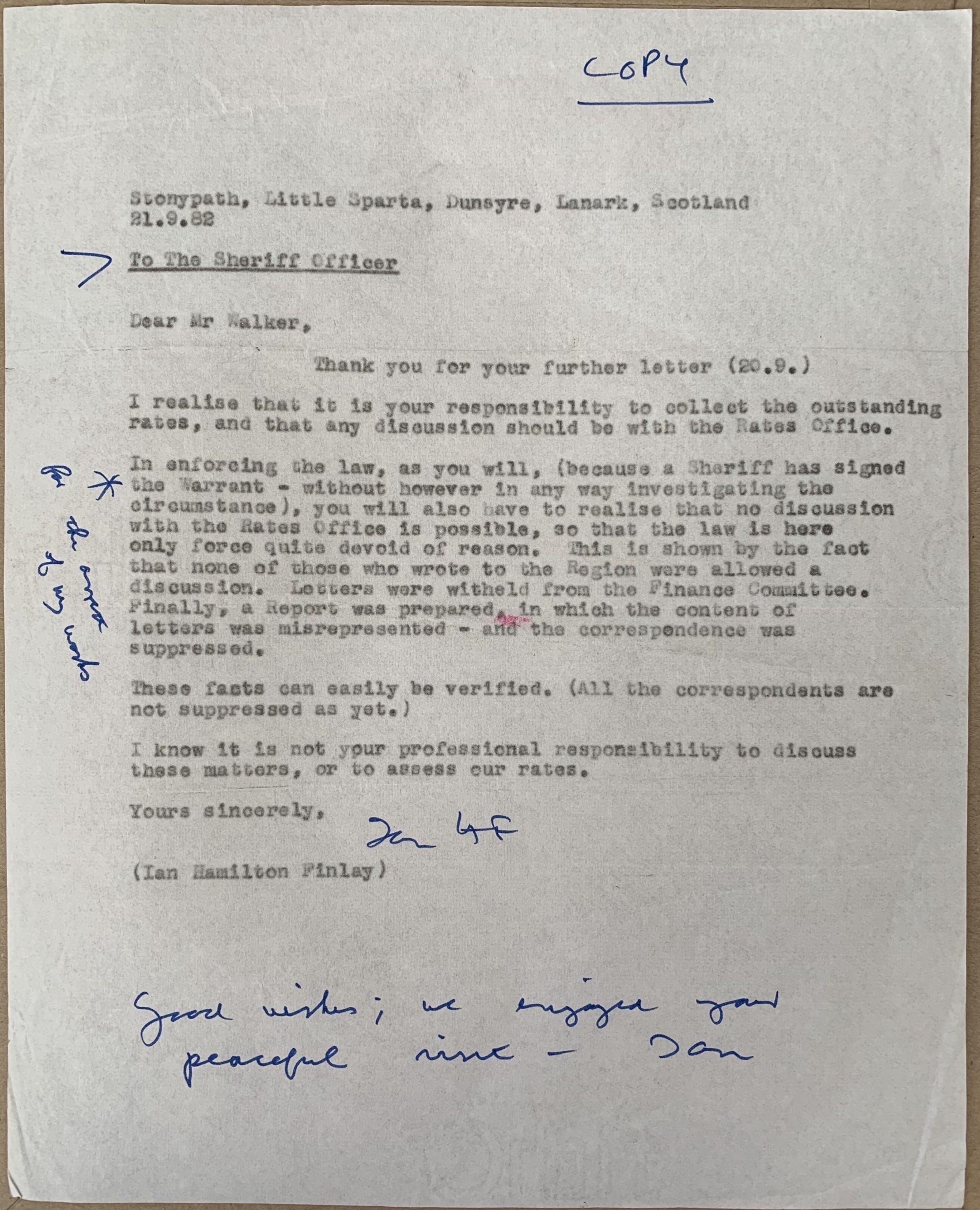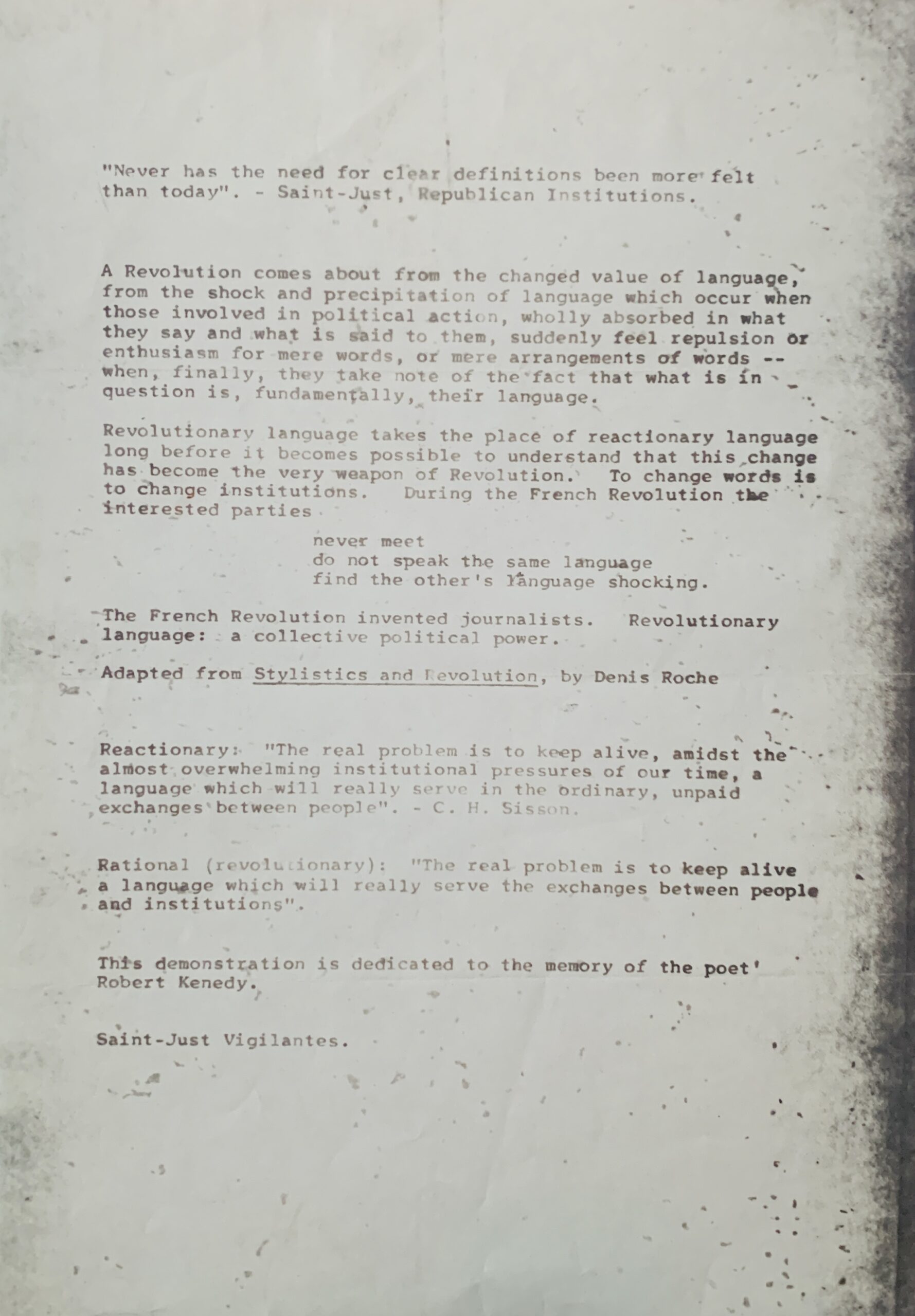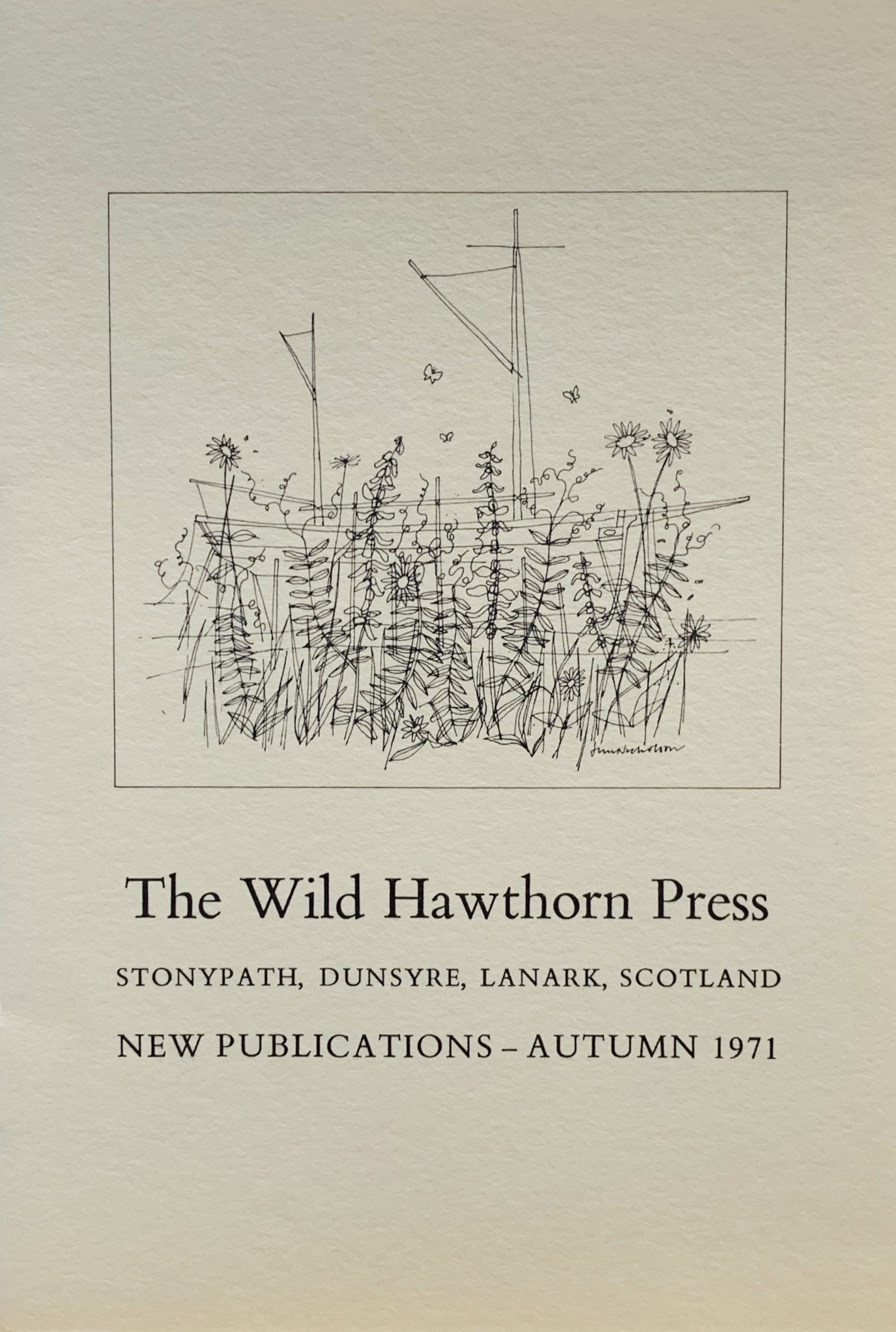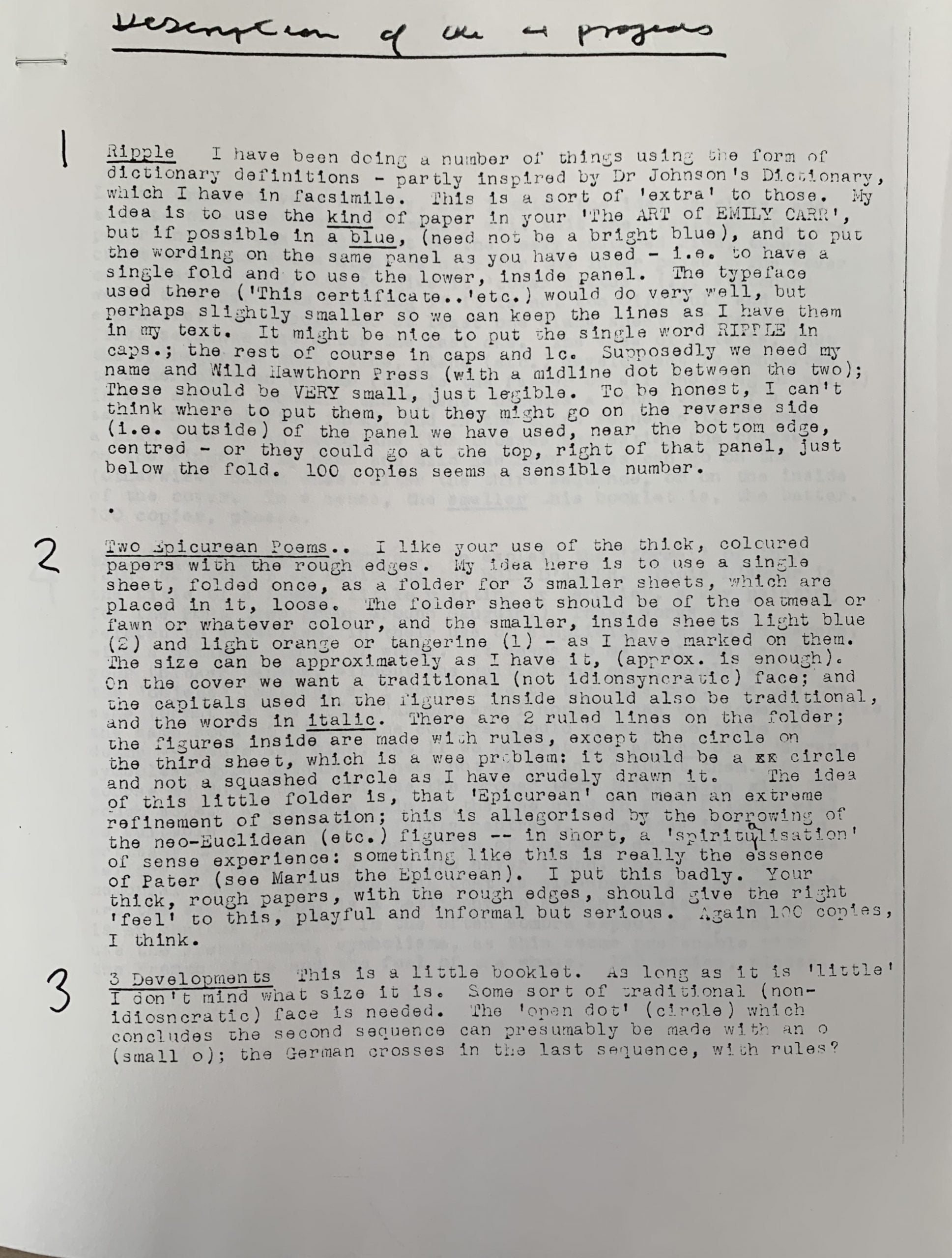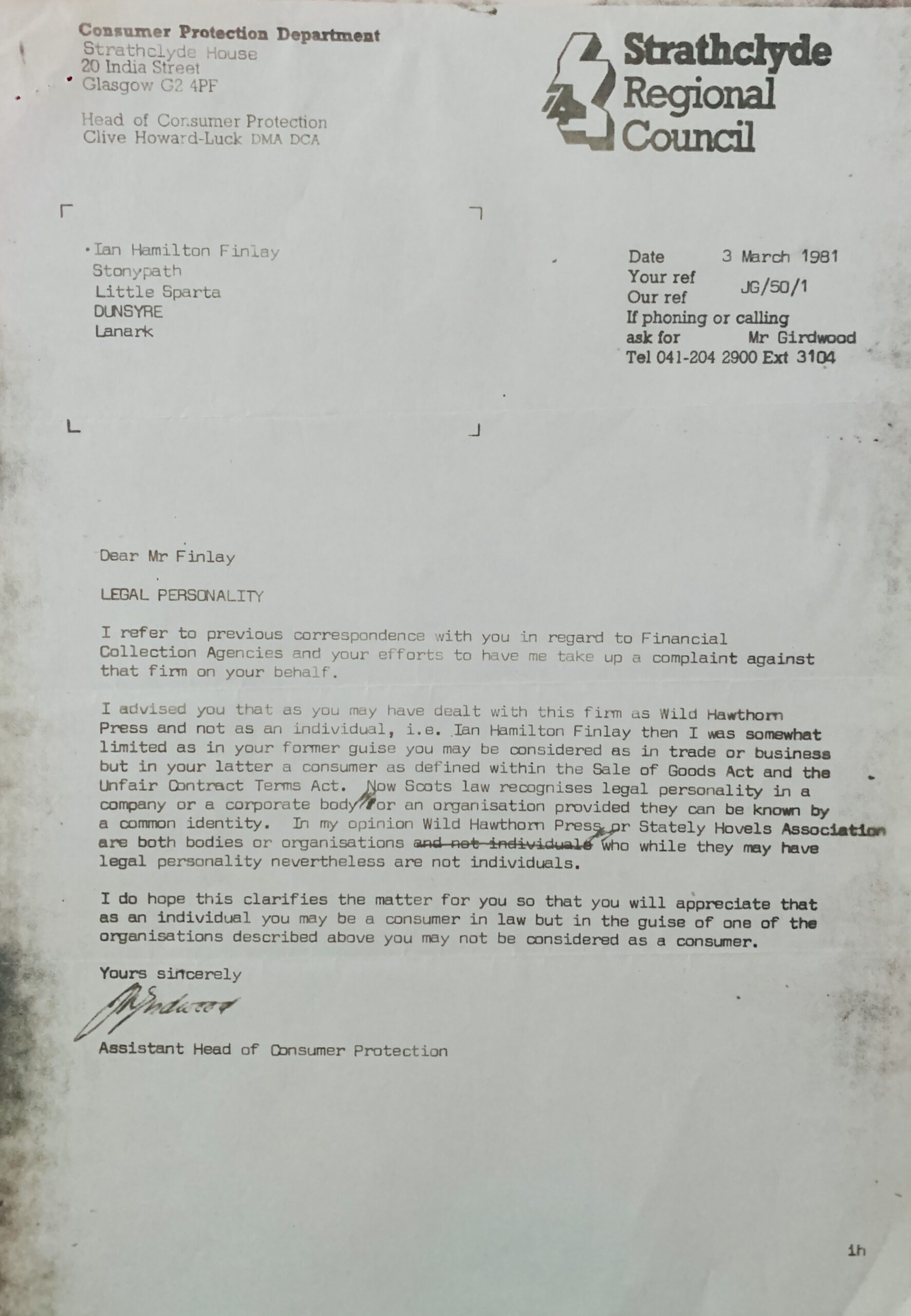Posted at 20:32h
in
Letters + Documents
Little Sparta: Finlay, n.d. (c. 1981)
Two original xerox stapled sheets of a letter both 30 x 21cm, 1pp. A long and important letter from Finlay to a collaborator in which he details the thinking behind various works and booklets.
Four different sections all deal with different publications Finlay is working on.
The first RIPPLE - discusses a publication which is a single sheet but where the choice of paper and colour is an important part of the work. The text would be minimal based on design of Dr Johnson's Dictionary.
The second is TWO EPICURIAN POEMS - where first Finlay discusses the choice of paper and binding and printing for the book but then goes on to explain that "epicurian" can mean an "extreme refinement of sensation" so the choice of thick rough papers reflects that emphasis on feeling.
The next section deals with 3 DEVELOPMENTS - another small planned booklet. After describing how he would like some of the typography set, Finlay then turns to the choice of paper again. Finlay notes the placing of blank pages to split sections up is important and then explains two distinct sections within the concept are respectively a development of the drawings in a Pythagorean way and then a Heraclitean evolution. The third section is not discussed.
The final work discussed is LES CIMETIERES DE NAUFRAGES and notes its relationship to Symbolism (along with an earlier "print" called Bois D'Amour which he had added to the letter) . Again the choice of paper and typography is to the fore in the discussion. The colour choice of mauve and blue Finlay regards as similar to that of Symbolist paintings . Finlay explains that the cemeteries found in Brittany for sailors lost at sea represent for him a symbol of something gone and missing and unable to be rescued or found - and that Symbolist art is as that also. He then says that the choice of the title being in French "seems preferable".
This letter does not indicate who it was sent to but we can surmise a printer or typographer collaborator. What the letter does show is the importance of the medium utilised for Finlay - all aspects of a printed work are to be controlled and have meaning. This is one of the few documents that shows his thought process in the making of the book rather than its intellectual genesis.
...

